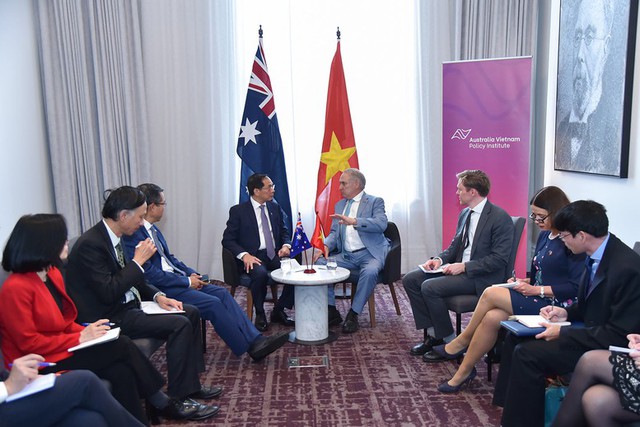Viet Nam welcomes Australia's efforts to diversify economic cooperation with ASEAN
VGP – Deputy Prime Minister and Foreign Minister Bui Thanh Son welcomes Australia's efforts to diversity economic cooperation with Southeast Asian partners, including Viet Nam, through various practical initiatives and projects.

Vietnamese Deputy Prime Minister and Foreign Minister Bui Thanh Son meets with Australian Minister for Trade and Tourism Don Farrell on October 17, 2024.
Bui stressed the point during his meeting with Australian Minister for Trade and Tourism Don Farrell on October 17.
The deployment of these initiatives and projects is part of Australia's Southeast Asia Economic Strategy to 2040 as Australia believes that Southeast Asia will be an economic powerhouse fuelled by favorable demographics, industrialization, urbanization and technological advances by 2040.
Southeast Asia as a bloc is projected to become the world's fourth-largest economy by 2040, after the United States, China and India, with an expected compound annual growth rate of 4 per cent between 2022 and 2040.
This region, with a large and growing population, will lead to greater spending on lifestyle, education and housing, while there will be increasing demand for health and aged care services, according to the Australian side.
The region is a development and economic success story. In 2022, Southeast Asia's combined nominal gross domestic product (GDP) of around US$3.6 trillion was larger than the economies of the United Kingdom, France or Canada, and around twice the size of the Australian economy.
Two-way trade between Australia and ASEAN reached $178 billion in 2022, accounting for 15 per cent of Australia's trade, which is greater than our trade with Japan or the United States.
Trade between Viet Nam and Australia has grown strongly, from AUD32 million in 1990 to nearly US$7 billion in 2014 and nearly US$14 billion in 2023.
Australia has established AUD$2 billion investment facility to support business engagement with Southeast Asia (SEAIFF).
Managed by Export Finance Australia, the SEAIFF will provide loans, guarantees, equity and insurance for projects that would boost Australian trade and investment in Southeast Asia, particularly in support of the region's clean energy transition and infrastructure development.
